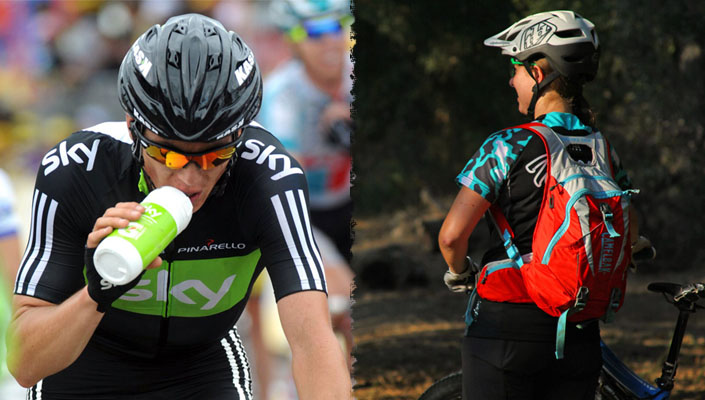
While all types of riders agree that hydration is one of the most important things to focus on when on the bike, opinions differ greatly about the best and most fashionable way to go about it. The two main camps are water bottles and hydration packs.
Water Bottles
Road cyclists, pretty much, without exception, use water bottles for hydration. There are a few reasons for this: firstly, bottles are convenient. They're nestled snugly between your knees (or behind your saddle if you're a triathlete), so they're easy to reach.
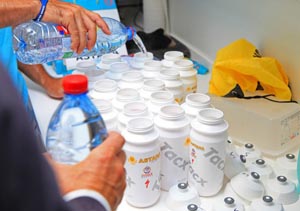
They're also easy to refill - just pop or twist off the top and add your water, and/or drink mix. If you're racing, it's a simple matter to throw your empty bottle (or bidon, in roadie-speak) to your support crew and have them hand you a new one. In hot weather, bottles can be partially frozen overnight, then topped up in the morning to keep them suitably chilly.
Unlike hydration packs, bottles can be filled with any drink you like – Gatorade, Coke, Berocca, or your own exotic home brew – and simply washed and re-used. Once you put anything other than water into the bladder of a hydration pack it's never the same.
Water bottles can make a statement too – to be suitably Euro-cool, which is what every road rider really wants; water bottles should either be color-coded to your bike or in deliberate, (but casual) contrasting colors. Riders with two water bottles mounted on their bikes should always make sure the bottles match.
Most road rides occur in urban areas or on country roads – either way, your chances of finding a gas station, convenience store, or café to refill your bottles are pretty high. Indeed, many regular bunch rides begin and end at a café and combine hydration, socializing, and enormous caffeine intake.
Bottom line for roadies: bottles/bidons are cool, they're easy, they're traditional, and you can always fill them up when they run dry. Hydration packs are for hippies.
Hydrations Packs

Mountain bikers tend to lean the other way, often favoring packs over water bottles. MTB events tend to be in more remote areas where it can be difficult to refill a bottle, and cafés and gas stations are few and far between.
Hydration packs can hold a lot more than traditional water bottles – a common size is 2 liter (68 ounces), and 3½ liters (118 ounces) packs are not uncommon.
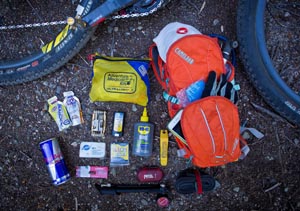
Additionally, you can store other stuff in the zippered compartments of a hydration pack. There's usually enough room to put some food, a minimal first aid kit, and some bike tools and spare tubes. Road riders, who covet aerodynamics over nearly everything else, either keep this stuff in the rear pockets of their jerseys, a tiny and limiting saddle bag, or just don't bother bringing it, but MTB riders who stray far from home need to be sure they're not only well hydrated, but properly fed and capable of fixing themselves and their bike where necessary.
When riding off-road, two hands on the bars is often a necessity, and the convenience of simply twisting your head to take a drink is far superior to risking a drink from a bottle (or, more likely, the risk of not drinking because it's just too difficult.)
Finally, it's quite common when riding in the mud and slop to end up with your bike, including water bottles, completely covered. Taking a sip from a filth-encrusted bottle is no fun at all: better off to keep whatever is going to touch your mouth way up at shoulder-height.
Bottom line for MTB riders and adventurers: packs might be for hippies and are definitely not aero, but too bad. They work, and you can put a lot in them.
All fun aside, the message is the same: even in cooler weather, hydration is crucial for performance and enjoyment on the bike. And to stay hydrated, you may need to plan ahead: if you're sticking with bottles, make sure you'll get the opportunity to refill them, and if you're going to be isolated enough to need to fill a hydration pack, make sure you take tools and food with you, too.
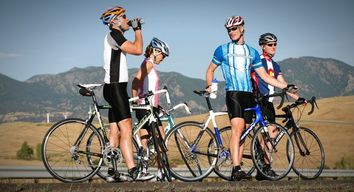
RELATED ARTICLE:
How to stay hydrated while cycling
Maintaining your hydration during exercise is absolutely critical to maximizing performance. Water is often referred to as the "most important nutrient for life" and there's good reason for it... READ MORE
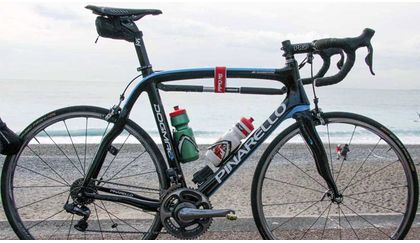
RELATED ARTICLE:
To saddle bag or not. Is this the best way to carry gear on my bike?
If you think politics can divide a nation, just wait until saddle bags are mentioned! It's not that cyclists are divided by the convenience of a saddle bag; it's just whether or not they would personally use one... READ MORE


